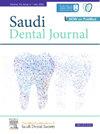评估来自 ChatGPT 的有关口腔外科、预防性牙科和口腔癌的人工智能信息的质量:探索研究
IF 2.3
Q3 DENTISTRY, ORAL SURGERY & MEDICINE
引用次数: 0
摘要
目的评估 ChatGPT 人工智能语言模型在口腔外科、预防性牙科和口腔癌方面生成的牙科信息的质量。专家们准备了 50 个问题(包括风险因素、预防措施、诊断方法和治疗方案等方面)提交给 ChatGPT,并使用标准化评分标准对其回答的准确性、完整性、相关性、清晰度或可理解性以及可能存在的风险进行评分。为了对 ChatGPT 的回答进行评估,使用了标准化的评分标准。评估过程包括对 ChatGPT 所提供回答的优点、缺点和潜在改进领域的反馈。结果虽然该工具在预防牙科方面的得分最高,为 4.3/5,并且能够连贯地传达复杂的信息,但在口腔外科和口腔癌方面的准确性较低,分别为 3.9/5 和 3.6/5,在术后指导、个性化风险评估和专业诊断方法方面存在一些不足。53%的口腔癌和40%的口腔手术存在潜在风险,如缺乏个性化建议。结论:研究结果表明,在使用人工智能生成的信息时,需要专业人员的监督,并随着功能的发展进行持续评估,以确保负责任地实施最有利于患者的护理。本文章由计算机程序翻译,如有差异,请以英文原文为准。
Assessing the quality of AI information from ChatGPT regarding oral surgery, preventive dentistry, and oral cancer: An exploration study
Aim
Evaluation of the quality of dental information produced by the ChatGPT artificial intelligence language model within the context of oral surgery, preventive dentistry, and oral cancer.
Methodology
This study adopted quantitative methods approach. The experts prepared 50 questions (including dimensions of, risk factors, preventive measures, diagnostic methods, and treatment options) that would be presented to ChatGPT, and its responses were rated for their accuracy, completeness, relevance, clarity or comprehensibility, and possible risks using a standardized rubric. To carry out the assessment of the responses by ChatGPT, a standardized scoring rubric was used. Evaluation process included feedback concerning the strengths, weaknesses, and potential areas of improvement in the responses provided by ChatGPT.
Results
While achieving the highest score for preventive dentistry at 4.3/5 and being able to communicate the complex information coherently, the tool showed lower accuracy for oral surgery and oral cancer, scoring 3.9/5 and 3.6/5, respectively, with several gaps for post-operative instructions, personalized risk assessments, and specialized diagnostic methods. Potential risks, such as a lack of individualized advice, were shown in 53% of the oral cancer and in 40% of the oral surgery. While showing promise in some domains, ChatGPT had important limitations in specialized areas that require nuanced expertise.
Conclusion
The findings point to the need for professional supervision while using AI-generated information and ongoing evaluation as capabilities evolve, for the assurance of responsible implementation in the best interest of patient care.
求助全文
通过发布文献求助,成功后即可免费获取论文全文。
去求助
来源期刊

Saudi Dental Journal
DENTISTRY, ORAL SURGERY & MEDICINE-
CiteScore
3.60
自引率
0.00%
发文量
86
审稿时长
22 weeks
期刊介绍:
Saudi Dental Journal is an English language, peer-reviewed scholarly publication in the area of dentistry. Saudi Dental Journal publishes original research and reviews on, but not limited to: • dental disease • clinical trials • dental equipment • new and experimental techniques • epidemiology and oral health • restorative dentistry • periodontology • endodontology • prosthodontics • paediatric dentistry • orthodontics and dental education Saudi Dental Journal is the official publication of the Saudi Dental Society and is published by King Saud University in collaboration with Elsevier and is edited by an international group of eminent researchers.
 求助内容:
求助内容: 应助结果提醒方式:
应助结果提醒方式:


